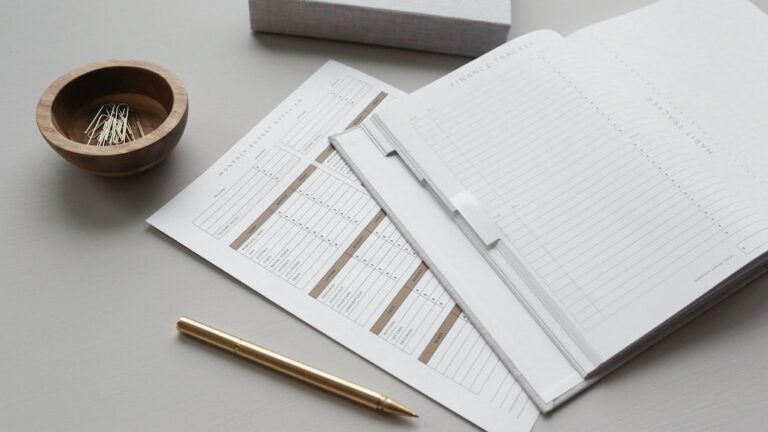Last updated Jun. 22, 2023 by Charles Zemub
18 Best Budgeting Methods That Actually Work (Current Edition)
Do you know that your budget method actually determines your financial success? Most people never noticed the power that comes with budgeting. As a result of this, they always end up deploying poor budgeting methods.
If you hope to create a realistic budget, you must find the best budgeting methods that will work perfectly for you. So what are the best budgeting methods to deploy? In this article, you will understand the 18 best budgeting methods that actually work.
Why do you need the current edition of budgeting methods?
Making a budget is the first easy step. But the method you deploy in implementing your budget plans will determine your success. Hence, you need a good budgeting method to reach your potential. The tactic which you deployed in setting up your budget is actually vital.
But why should you use the best budgeting methods in the first place? Your consideration of using unique budgeting methods should be based on the following:
To make a great decision
Some budgeting methods will surely push you into making the wrong decision, which will ultimately affect your budgeting plans. But when you work with the best methods, you will be on the safer side of making great decisions.
Your decision to work with them will likely determine your progress with time.
Attain greater goals
Before you conclude on a budget, you must have great plans to attain goals. However, poor budgeting methods will only frustrate your great plans with time. Instead of deploying any budgeting methods, go for the best. Working with the best methods will move you closer to your budgeting goals.
Avoid certain risk factors.
No matter how you attempt to play safe, you will always be faced with risk factors. Poor budgeting methods will likely add more fuel to these risks.
However, working with the best budgeting methods will give you the ability to manage any risk factor that may arise along the way. Risk management is essential when you hope to attain your budgeting goals. Hence, you must go for the best methods to enjoy this benefit.
Balance your financial plans.
You cannot go without expenses. However, if you plan to make a budget for the future, you need to figure out how to accommodate your needs with your budgeting plans.
When you fail to deploy great budgeting methods to draft your aims, you will always struggle with balancing your financial plans. You will become confused about how to put your money at work.
But when you use great budgeting methods, you will find it much easier to balance out other financial plans without stress. Your financial goals must be well-defined to enable you to stick to your budget plans for a given period.
Stick to your Budget Plans

If you find sticking to your budget plans challenging, you need to change tactics. Finding a good budgeting method is one unique and creative tactic you can deploy. You will be highly motivated to stick to your budget without being distracted by other financial needs.
When considering the best budgeting methods that work, you must create time to find these strategies. Hence, if you truly want to make a great budget, you should compare different methods to determine which ones are the best for you.
Which budgeting methods should you consider the best? The following 18 best budgeting methods that actually work will give you the best services.
Pay-Yourself-first Budgeting Method
This type of budgeting method primarily focuses on your ability to save and repay your debt within a given time. Hence, if you want to deploy the pay-yourself-first budgeting method, you must develop great plans that will enable you to save more and get out of debt.
Keep in mind that debt can lower your ability to stick to any budget. You will struggle to meet the debt repayment demands and forget your budgeting goals. However, this budgeting method can help you come out stronger while maintaining standards.
Before deploying this method effectively, you must determine your weekly or monthly income. If you have debts to repay, you must create a strategic plan to accommodate the debt with your budgeting and saving goals.
You are expected to put aside a certain percentage of your income to satisfy the debt and saving payment options. The remaining balance can go for your budgeting and other regular expenses.
Through this strategy, you will meet your debt and saving goals while sticking to your budgeting goals.
50/30/20 budgeting method
Unlike most budgeting methods, the 50/30/20 strategy is considered to be the most effective method to deploy. You don’t have to work under pressure to accomplish this method as its deployment strategy is simple and straightforward.
The 50/30/20 budgeting method implies that 50 percent of your income should satisfy your needs or necessary expenses, 30 percent of your income should satisfy your wants or discretionary expenses, and the remaining 20 percent should satisfy your savings and debt repayment objectives.
If you are a newbie in budgeting, you should consider getting started with this method because of its simplicity. There is no need to monitor your regular expenses. With this plan, your chances of becoming successful in making great budgets will arise.
However, if you have enough debt to repay, the 50/30/20 budgeting method may not always be the best option to consider. This is because 20 percent of your income (depending on your income), may not be enough to satisfy this debt repayment option.
However, you minimize your needs and want to repay the debt faster. Also, make focus on sticking to the 50/30/20 budgeting methods.
Zero-based budgeting method

This budgeting method focuses on subtracting your regular expenses from your income, likely amounting to zero. The zero-based budgeting method is specifically meant for people who can easily determine their monthly income.
Even if you have multiple sources of income, you should strive to sum them up and know how to use your money accordingly. Once you are done calculating your regular income, ensure that you sum up your savings and regular expenses to be equal to this amount.
For example, if your monthly income is $5000, your savings and expenses should be calculated and equated to your income. Through this strategy, you will put your entire earnings to work and stick to your budgeting goals over the long term.
Hence, focus on drafting great plans for your expenses to make them equal to your income. As you do this, ensure that you exclude unessential expenses from the list. You may regret your actions later if you plan to spend your money on unessential expenses.
Hence, you must be accountable for your entire expenses as you work with this budgeting method.
Values-based Budget
The Values-based budgeting method is always favorable to people with specific goals regarding what or where they spend their money. When you decide to use this budgeting method, you must learn to spend money.
You are still required to monitor your spending and ensure that your money is heading in the right direction. The values-based budgeting method also mandates people to spend money on a specific category.
If you don’t value a particular expense, you should never consider spending on it. To ensure that your money is spent wisely based on your value, devote your time to writing down what you value most. For example, if you value tourism, fashion, or any other items, ensure that they all make it to your list.
Any item that is not included on your list isn’t worth your time and money. Keep in mind that this list should be ready for adjustment in the future. You may decide to value a new item in the future. If your list cannot be modified, you will never reach a great milestone using this budgeting method.
Activity-based budgeting method
This budgeting method helps a company or individual to determine the exact amount required to back up a particular goal or output. The company or individual must set a financial goal first before reaching this goal with unique strategies.
If you want to deploy an activity-based budgeting approach, you must find a tactic to attain your goals faster without any hindrance. Hence, determine the exact cost of executing these activities before taking any other step.
When you cannot do the necessary estimations before deploying this method, you will always become confused along the way. Hence, you must be sure about your plans before working towards them.
For example, if your goal is to generate about $50 million in revenue before the end of the year, you must analyze the total cost required to attain this milestone.
Value proposition Budgeting method

This budgeting method allows you to determine the exact amount required in the budget. Value proposition budgeting always focuses on the value of the business or individual.
Your primary goal here should concentrate on canceling out expenses that will lead you out of your budgeting plans. When you run a business, you can use this method to determine the value of the item you sell to your customers.
In fact, most business people deploy this method in determining whether the value overweighs the total cost of running the business. With this strategy, you can easily escape debt and sell your products based on their values.
The Balance Budgeting
If you must consider this budgeting plan, you should focus on canceling out every careless expense and focus on spending majorly on your essential needs and wants. In fact, the balance system is regarded as one of the best budgeting methods everyone should consider adopting.
If you must deploy this budgeting strategy effectively, you must separate your needs from your wants. You must be accountable for every expense you make each day. Everyone has different financial expectations and goals.
For example, some people are highly indebted, while others are free from debt. So if you are living in debt, you must create a realistic plan for your budgeting. Your primary goals should rely on repaying your debt and becoming free with time.
However, if you are free from debt, you may consider using the balance system to save more money for the future. You can even make great plans for emergency funds. But this has to depend on your level of income.
The 60% Solution
The 60% solution enables people to manage their income wisely. From the applicable strategy of this method, you will discover that it is similar to the 50/30/20 budgeting method. Richard Jenkins, the editor-in-chief of MSN Money, was the first person to propose this method.
According to Richard, this budgeting method requires about 60% work to actualize great results. Richard urges people to use only 60% of their income to satisfy the committed expenses. These committed expenses include your car payments, food, mortgage, insurance, clothing, and more.
Richard also advised people to channel the remaining 40% of their income into long-term savings, retirements, short-term savings, fun, and many others.
Even if you cannot stick to this budgeting method because of your regular expenses, you can adjust it to 70% on committed expenses and 30% to satisfy other needs. If you deploy this method effectively, your money will always go in the right direction.
The envelope system

The envelope system helps you to reduce your luxury expenses and keep you out of debt for the long term. Unlike some budgeting methods, the envelope system does not require your ability to monitor your daily expenses.
However, you must stick to a certain spending limit to stop spending more in each expense category. In this method, you are required to distribute your money in numerous envelopes to accommodate all your expense categories.
Before you can determine how much it costs you to live up to the standard in each month, you must be accountable for the money you spend for that month. Calculate all your expenses to know how many expense categories to create. You can start with your basic needs, then slowly go over to your wants.
Your expense category can be planned so that you have a certain percentage of your income satisfying it. For example, your expense categories may include groceries, fun, insurance, rent, food, etc.
Write the name of each expense on the envelope and determine the exact amount that should satisfy this need. Put the money in the envelope and begin to use it immediately. If the money finishes before the month’s end, you may consider returning to your budget plan to do the necessary corrections.
Incremental Budgeting
Incremental budgeting is one of the simplest budgeting methods to consider. This budgeting method requires you to take the previous year’s figures and add or remove a certain percentage to determine your current year’s budget.
Through this strategic method, you will realize that the cost drivers of incremental budgeting remain almost the same after many years of practice and usage.
But as people’s financial expectations always grow and increase from year to year, some people may be fast to create a bigger budget without realizing its dangers.
Even if you want to increase your budget in the coming years, carefully analyze inflation and other risk factors that may affect your income along the way. When you do the necessary calculations, you can always save greatly while using this budgeting method.
Negotiated Budgeting
This method involves the combination of top-down and bottom-up budgeting approaches. It is mostly deployed in a working establishment where the employers will issue the employees a particular target to meet.
But the budget preparation tasks are often shared by everyone working within the establishment, including the employer. With the negotiated budgeting method, every worker within an organization finds it easier to meet the budget targets.
If you find yourself in a working environment where negotiated budgeting is deployed, you will surely enjoy working in such a friendly environment. This method will give you a feeling of working on your personal goal, even though you are working for the success of your organization.
If you own a company, you may consider adopting this method to increase your chances of reaching goals before the end of the year.
Imposed budgeting

Imposed budgeting is a budgeting method that enables company owners to target costs and operating activities directly. As its name implies, managers within a particular organization work strategically to meet the goals of the company.
If you run a business, you can also use imposed budgeting to improve your outreach to customers while making a profit at the same time. When you set a more complex goal for your business, you can deploy a strategic approach to ensure that you succeed in the end.
But instead, work extra hard to set and actualize realistic goals. Through this approach, you can understand how to tackle challenging situations and render a more professional service to customers.
Participative budgeting
Under participating budgeting, the managers of the company provide the recommended targets which the employees working within the establishment will likely meet within a given time.
However, the employees at each level can also have the freedom to set and stick to a budget. If you want to practice participative budgeting in your business or workplace, you must work with the recommended targets to attain a greater height.
Participative budgeting is one of the best ways to accomplish greater goals in businesses. You can deploy this method to see how your business will grow with time.
No budgeting
This budgeting method allows you to focus more on your account balance. You don’t even have to monitor your expenses to meet the basic demands of this budgeting method. You can use this method to automate your savings.
Most people that deploy the no budgeting strategy check into their account balances before determining how to make plans for each bill. Hence, you automate the payment for each bill within the month.
If you have a great passion for budgeting, note that this method may not be the best for you. But if you do not have any intention to stick to a budgeting plan, then you may consider using this method to set standards for yourself.
Root Budgeting System
The root budgeting system allows you to create a unique budgeting system that will favor you in the long run. Through this system, you will understand the three pillars that will guide you toward the successful implementation of your budget.
You will also understand the basic foundation of budgeting and see how to determine your values. When looking forward to choosing the best budgeting principle you can easily understand, the root budgeting system should be a good option to consider.
In general, the root budgeting system allows you to become your real self while making a budget. You don’t have to look at other people’s opinions to make your decision.
You have to find a means of creating and sticking to your budgeting decision through this means.
The Cash-Only Budgeting

Under this budgeting method, endeavor to spend only cash at all times. This implies that you will never run out of cash. Instead of relying on spending with your credit cards, you will have to withdraw the cash from your bank account and proceed to spend the money wisely.
If you want to adopt this method, you know the exact amount that should satisfy each need in the long run. For example, if you need $200 for groceries per month, you are expected to withdraw $200 from your bank to satisfy this need.
You don’t have to spend the money on a single shopping trip. Hence, you should know the exact amount to take to the grocery each time you go shopping.
Long Term Budget
This budgeting method should last for long terms, and you are expected to stick to the budgeting goals throughout the period. If you are heavily indebted to any organization, you may find it challenging to meet the demand of a long-term budget.
Hence, you must be free from debt to reach a great milestone in the long-term budgeting method. This budgeting plan is often made to buy a new house or car, save for retirement, and more.
Short Term Budget
Short-term budgeting methods often last within a short period, such as days, weeks, or months. However, it should not exceed 12 months.
Otherwise, it will be considered as a long-term budget. The primary aim of the short-term budget is to plan for the future and to meet upcoming demands. You can create a short-term budget to start a small business, buy new clothes, shoes, and more.
Conclusion
Thank you for reading this article up to this length. If you are still reading, it implies that you are determined to work with the best budgeting methods. Before you consider deploying any of these budgeting methods, ensure that you analyze your sources of income to see how you can improve your financial life and live up to expectations.
The 18 best budgeting methods that actually work that are listed above will enable you to attain greater goals while making your budgeting plans.







